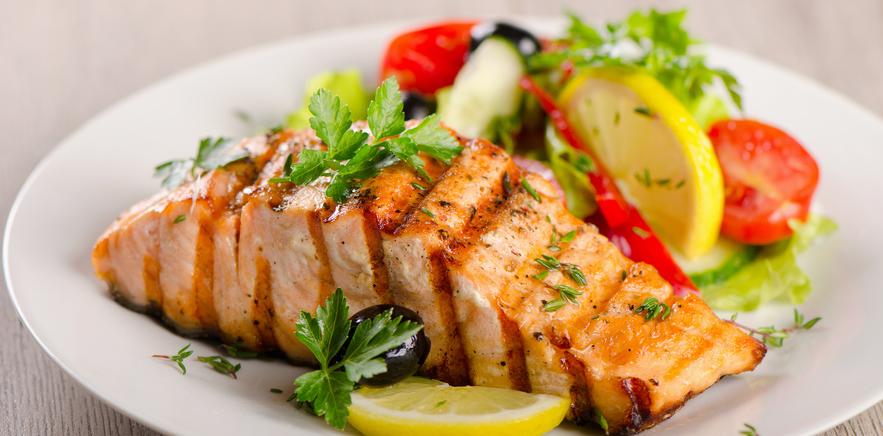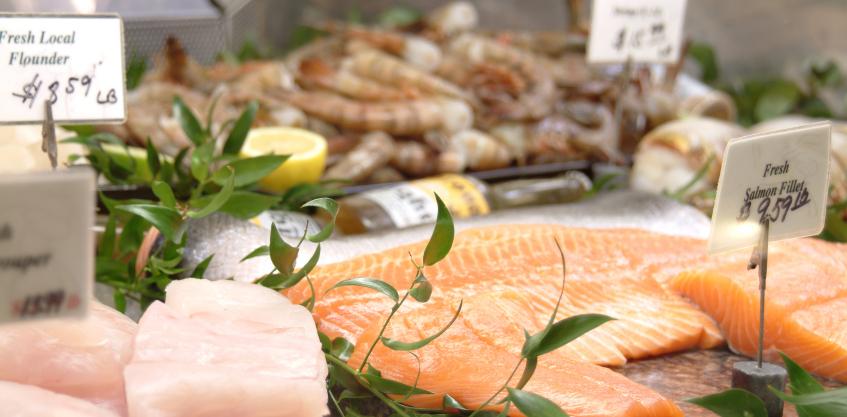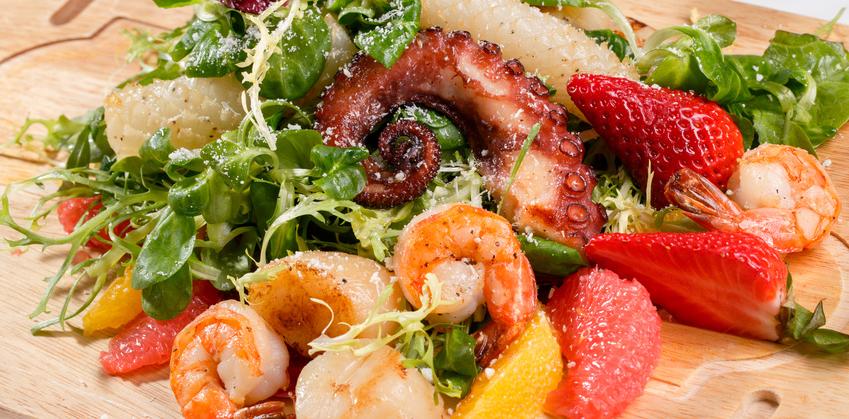Our oceans abound with glorious sea life, from algae to zebra fish. And how fortunate for us that these bodies of water have been a source of nourishing foods for people around the world for centuries.
That’s why we love October. It’s National Seafood Month, and that means there’s 31 days to celebrate the bounty of our lakes and oceans and the goodness of seafood. It’s also a time to educate ourselves on how to continue to make responsible, sustainable choices. And lucky for us, we have a double feast with National Salmon Day on October 8.
Seafood is Where Delicious Meets Nutritious
The recent USDA Dietary Recommendations for Americans encourages us to eat 8-ounces, or two seafood meals each week, but most of us are eating only about half that amount, partly due to confusion surrounding fish from safety concerns to practical challenges, such as how to cook it at home. The safety issue of seafood has become part of our collective consciousness, so much so that in the recent movie, The Intern, the daily stresses felt by busy businesswoman and sushi-lover, Jules Ostin, include the worry that she’s consuming too much mercury.
According to registered dietitian, Serena Ball, however, many of the most popular fish (like salmon, trout, tilapia, and most shellfish) are low in mercury, so people who eat a variety of seafood (especially choices low in mercury) need not fret. In our article, Angling for Answers: What Consumers Want to Know about Seafood, Serena goes on to explain that because seafood is such a rich source of the mineral selenium (which can help counteract the effects of mercury), the benefits of eating it can outweigh the potential risk. According to Serena, The real risk is not getting enough seafood. This is especially true for pregnant and nursing moms; babies need the brain-boosting benefits of omega-3 fats. Make sure to look at the resources included at the end of this article they will help you make seafood choices to it your dietary and health needs.
Five Reasons to Enjoy More Seafood
1. Its Great Brain Food
The DHA and EPA omega-3 fatty acids found in fish is important for brain development of growing children, and maintenance of memory and mental sharpness in older adults.
2. It Keeps Skin Healthy
EPA fatty acids can help hydrate the skin, and eating fatty fish, such as salmon, can help protect cells from free radical damage, such as that caused by the suns ultraviolet (UV) rays.
3. Your Heart Will Thank You
Seafood is rich in heart-healthy omega-3 fatty acids, and is a lean source of animal protein. Eating lean protein at a meal can help sate our appetite and may help with maintaining a healthy weight. A healthy body weight is linked with a lower risk of high blood pressure, stroke and heart disease.
4. It Promotes Good Overall Health
Fish is a natural source of vitamins such as vitamins B, D and A. B-complex vitamins contribute to a healthy nervous system, A is needed for healthy vision, and D, is essential in bone development. Seafood is also a good source of minerals such as selenium, zinc, iodine and iron.
5. It’s a Staple in Many Healthy, Convenient, and Affordable Meals
All forms of seafood fresh, frozen or canned are healthy choices. In fact, canned or pouched salmon and tuna are some of the best nutrition, and wonderfully convenient-bargains in the supermarket.
Learm More About Nutrition, Sustainability, and Cooking with Fish:
This month, join us in celebrating the benefits of seafood while learning how you can be a responsible consumer to ensure both we and our oceans are healthy, and seafood is plentiful for generations to come.
- Angling for Answers: What Consumers Want to Know about Seafood.
Oldways interviews Serena Ball, registered dietitian, nutrition writer, and consultant for Chicken of the Sea. She shares answers to questions that consumers have about seafood, and busts myths along the way. - For more recipe ideas and information on seafood, Chicken of the Sea has developed this toolkit specifically for health professionals, found on the Oldways website. You’ll and a wealth of information from research to recipes.
- This Oldways recipe pairs frozen shrimp to what you have in your pantry fresh or frozen veggies, your favorite pasta or grains. Fast, easy and delicious!
- To keep your fresh or frozen seafood choices safe from selection to storage to enjoyment check out this handy Consumer Guide to Safe Seafood Handling developed by the Delaware Sea Grant College Program.
- Visit Monterey Bay Aquarium Seafood Watch and the Marine Stewardship Council to learn more about sustainable practices.
- This article from the Academy of Nutrition and Dietetics clearly outlines the types and amount of fish women should eat during pregnancy.
Deborah Plunkett, Oldways Nutrition Exchange Program Manager










Leave a comment